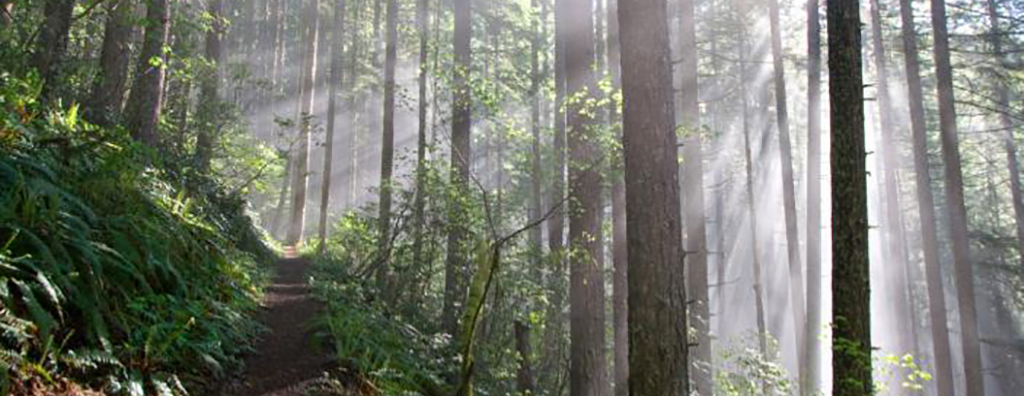
Carbon Market Opportunities Could Benefit Oregon’s Private Timberland Owners
Dick Kempka, The Climate Trust
As published by Sustainable Business Oregon – March 21, 2016
The United States has approximately 750 million acres of forestland, and although a vast portion of the western states’ timberlands are publicly held, a significant 56% is privately owned. In Oregon, nearly half of the state—or 29 million acres—is considered forestland, with approximately 10.3 million acres privately held. These forestlands can productively grow commercial grade timber, as opposed to areas where logging is restricted, such as congressionally designated wilderness areas or national parks.
Beyond the harvesting of timber, today, private forestland owners are being presented with new opportunities to earn revenue through participation in environmental credit markets. This innovative revenue stream is earned in exchange for increased conservation-based timberland management practices, which is a win-win for landowners and the environment.
The most immediate opportunity for Oregon forestland owners is through the sale of forest carbon credits that qualify under the regulated cap and trade program in California. Forest carbon offsets can be sold to California-based companies mandated to reduce greenhouse gas emissions by law. Carbon offsets are generated through such activities as extending the period of time between timber harvests, or protecting forestland with a conservation easement—activities that sequester greater amounts of carbon dioxide than under a business as usual scenario.
About 58% of the privately held forested acres in Oregon are owned by large landowners with more than 5,000 acres under management. From a carbon project development perspective, large timber properties are attractive because they generate higher volumes of forestry credits and thus have proportionately lower project setup and transaction costs. Until recently, most small forestland owners were effectively locked out of this rapidly emerging carbon market due to the focus of project financiers and developers on large-scale properties.
The Climate Trust, a Portland-based nonprofit that specializes in conservation finance, is working with several partners to change this paradigm and unlock carbon markets for small landowners. This is being done in two ways: the first, an upfront financial offering; the second, an innovative strategy to aggregate small landowners into a larger, and therefore more appealing and investible, project size.
Other opportunities for aggregation of small forestland projects exists through a new ecoPartners’ application tailored to areas of less than 3,000 acres. The Program, called Forest Carbon Works, allows forestland owners who are new to the market to quantify and sell the carbon sequestration value of their forests. Best of all, each forest owner can participate since there is no minimum size requirement. There are six simple steps to enroll.
Additionally, an initiative called the Regional Conservation Partnership Program (RCPP), seeks to create a model for how USDA programs can help landowners access new revenue streams for additional carbon stored in their woods. The RCPP, in partnership with USDA Natural Resource Conservation Service, is aimed at providing family forest landowners new information about the health and productivity of their lands and what they can do to store more carbon and potentially get paid for doing so.
Through the RCPP, and over the next three years, a coalition led by the Pinchot Institute for Conservation will be awarding $1 million in federal funding to family forest owners. This effort will offer landowners free initial assessments of carbon credit generation potential, heavily discounted carbon inventories, and cost-share for forest management plans—all of which are prerequisites for participating in carbon markets and often present barriers. The coalition of partners is also advancing new technologies for lowering the costs of measuring the carbon stored in forests and developing high quality forest management plans.
Taken together, these new financing and technological advances in the carbon market bode well for sustainable timber management and forward thinking landowners in Oregon and the Pacific Northwest.